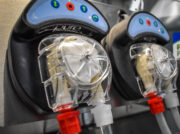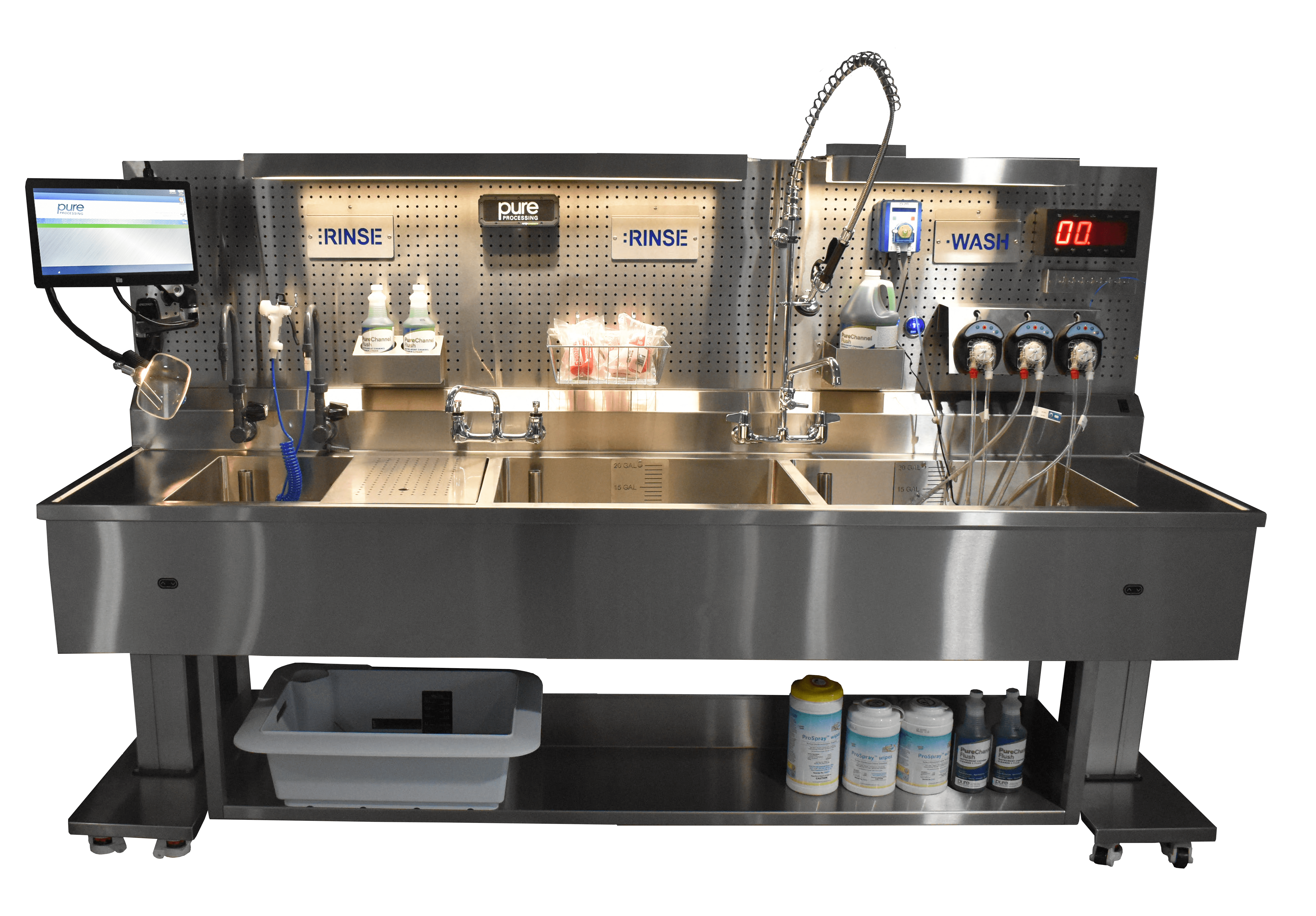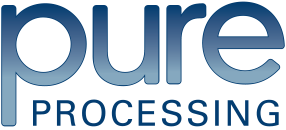From upgrades & enhancements to existing equipment, to new hospital department builds, Pure Processing helps medical facilities achieve three key objectives for their equipment investments:
1. Optimal patient safety outcomes
2. Enhanced operational efficiencies
3. Reduced costs associated with worker injuries & ergonomics, instrument damage, and infection risks
By leveraging our expertise and collaborative, partnership-first approach, we can help facilities protect their most important assets: their staff and instrumentation.
To learn about our full project capabilities, expertise, and approach, download our Project Capabilities brochure below to get started on your equipment journey with Pure Processing.
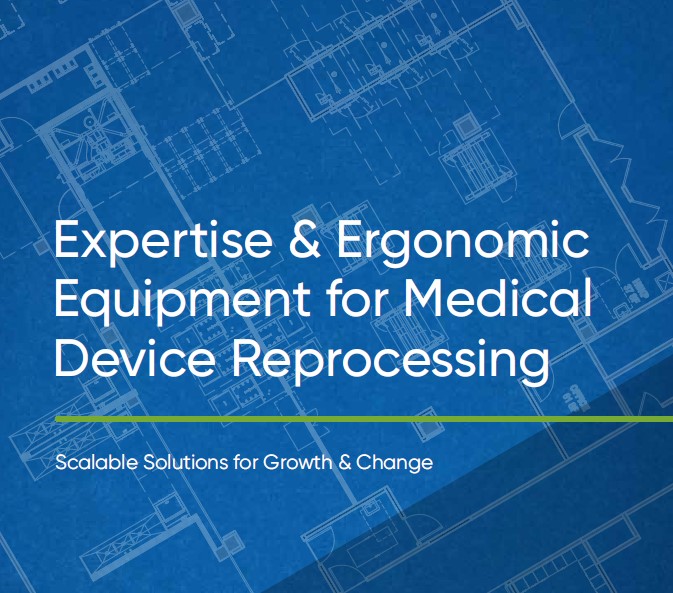
Interested in learning more? We'd love to partner with you!
Read more regarding projects, industry guidelines, and customer insights.
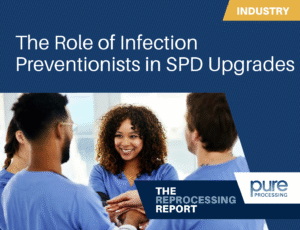
The Role of Infection Preventionists in SPD Upgrades
Infection preventionists (IPs) play a vital role in shaping the safety, compliance, and frontline defense of sterile processing departments against infectious pathogens. As the healthcare environment continues to evolve, the expectations placed on SPD teams grow more complex. From regulatory updates to rising surgical volumes, the need for expert guidance and cross-department collaboration has never been greater. This is where Infection preventionists bring significant value. Their partnership supports the continuous improvement of reprocessing workflows, ensures adherence to evidence-based practices, and strengthens a facility’s ability to prevent infection risks before they occur. Why Infection Preventionists Are Essential to SPD Success SPDs rely on several interconnected components to consistently deliver safe and functional instrumentation. Infection preventionists strengthen each of these areas by applying a compliance-driven lens, validating processes, and advocating for the resources SPD teams need to succeed. Their involvement leads to better outcomes in three core areas: compliance and regulatory alignment, data and quality assurance, and risk analysis. 1. Compliance and Regulatory Alignment Regulatory demands in sterile processing are detailed and ever-changing. Infection preventionists help SPD leaders navigate standards from AAMI, AORN, CDC, and the Joint Commission by reviewing workflows, identifying gaps, and aligning practices with current guidelines. According to Angela Lewellyn, LPN, CRCST, CER, CHL, director of Development and Research at Advantage Support Services, Inc., Infection Preventionists benefit from taking a more hands-on role in sterile processing. Lewellyn explains that she: “advocate[s] for a closer, more hands-on approach for IPs that includes contributing to the oversight of cleaning and sterilization practices, ensuring compliance with infection control protocols, and conducting regular inspections as part of a continuous quality improvement program.” This level of engagement strengthens the validation of critical steps such as manual cleaning, inspection practices, sterilization packaging, and storage, helping departments identify and correct gaps before they escalate into survey deficiencies. ANSI/AAMI ST79, Page 1 highlights that many elements influencing sterilization occur outside the sterilization room, making cross-functional collaboration essential. The standard states that: “the policies and procedures governing sterilization processing should be developed in consultation with the managers of areas that use sterile medical devices and with appropriate committees or functional groups within the facility (e.g., infection prevention and control, safety, hazardous materials, risk management).” (ANSI/AAMI/ISO TIR17665-2) This reinforces the need for Infection preventionists to be directly involved in creating comprehensive, facility-wide policies that support safe and consistent reprocessing practices. This collaboration becomes especially important when departments are preparing for surveys or planning upgrades. IPs bring a comprehensive understanding of infection transmission risks and apply regulatory expectations to SPD design, workflow, and documentation practices. Their insight helps reduce deficiencies and supports consistent survey readiness 2. Data and Quality Assurance SPD generate critical data every day. Cycle parameters, soak times, manual cleaning steps, inspection outcomes, and verification metrics all contribute to a department’s quality assurance structure. Infection preventionists help transform this information into actionable insights. Their experience with evidence-based best practices enables them to validate reprocessing steps, ensure accurate documentation, and support a strong chain of quality control. This guidance becomes essential when departments integrate new equipment, update workflows, or respond to rising procedural volumes. Accurate data and consistent validation reduce variation and help identify long-term improvements. 3. Risk Analysis and Advocacy One of the most common ways Infection preventionists support our teams is through risk analysis and education. Their voices carry weight in conversations about facility design, capital equipment, staffing needs, and how each element relates to infection risk mitigation. According to Rebecca Leach, MPH, BSN, RN, CIC, staffing shortages within sterile processing can contribute to burnout, turnover, reduced productivity, and rushed practices such as increased immediate-use steam sterilization. These pressures elevate the risk of workflow breakdowns, improperly reprocessed instruments, procedural delays, and potential patient harm. Leach notes that: “without a strong, well-trained SPD staff, procedures and surgeries can grind to a halt, hospital revenue will decrease, and patients are at risk for disease and pathogen transmission.” This perspective underscores how deeply operational challenges affect infection prevention and why IP involvement in resource planning and process improvement is essential. IP advocacy can help SPD teams secure updated technologies, educate on compliance requirements, and design functional workspaces that reduce reprocessing variability. When IPs champion high-quality upgrades, they strengthen the entire perioperative ecosystem. How Infection Preventionists Support Improvements in SPD Upgrades Direct collaboration between IPs and SPD leaders leads to measurable advancements in workflow quality, technician preparedness, and infection prevention. Three Pure Processing solutions illustrate how this partnership elevates reprocessing performance and meets compliance expectations. Shaping the Future of Sterile Processing Together Infection preventionists and SPD teams share the responsibility of protecting patients through safe and consistent reprocessing practices. IPs contribute valuable insight that strengthens decision making around workflow design, equipment selection, and compliance priorities. Together, their partnership ensures reprocessing practices continue to advance alongside clinical needs. Infection preventionists will continue to support the evolution of SPD best practices, promote meaningful upgrades, and guide healthcare facilities toward safer, higher-quality reprocessing standards. See how Pure Processing can partner with your SPD and Infection Prevention teams to streamline workflows and enhance quality. Click here to learn more! Works Cited: ANSI/AAMI ST79 https://www.ormanager.com/the-role-of-infection-prevention-when-auditing-spd/ https://www.infectioncontroltoday.com/view/curing-sterile-processing-department-staffing-crisis
2025 Sterile Processing State of the Industry Report: Executive Summary
Pure Processing’s annual report captures what sterile processing teams are seeing across the United States. This year’s survey includes 732 participants and remains 100% anonymous. Below are the major themes and highlights for 2025. About the participants Roles represented include technicians, managers, supervisors, lead techs, educators, directors or chiefs, coordinators, and others, with a near even split in GI experience. Certification levels remain high, led by CRCST, with many holding additional credentials. Entering the industry Pathways into SPD include moving from another department 28.83%, referrals 19.81%, pursuing SPD education 10.25%, armed services experience 5.19%, and job fairs 3.55%. The largest single group found an opening with no prior SPD knowledge 32.38%. Combined, 60.00% entered via internal moves, referrals, or deliberate pursuit of SPD. What SPD professionals enjoy about the work Respondents emphasized helping patients and making a difference, contributing to surgery and patient safety, hands-on technical work, teamwork, learning and continuous education, pride and purpose, and job stability. Problems departments face Top problems reported were Pay and Benefits 71.11%, Space 51.80%, Equipment 41.62%, Training and Education 40.72%, Work Culture 32.04%, Management 25.15%, Compliance 14.97%, Visual Inspection 12.43%, and Ergonomics 10.18%. What should be easy to fix Participants pointed to quick wins in Workplace Culture and Professional Respect 28%, Training and Education 22%, Pay and Benefits 21%, Equipment and Preventive Maintenance 12%, Communication, Teamwork and Management Support 12%, and Compliance and Standards 5%. Most important problems to solve Equipment Issues 22.70% topped the list of priorities, followed by Training, Education and Competency at 15.40%, Pay and Benefits at 15.00%, Culture and Work Environment 14.00%, Leadership, Communication and Accountability 8.80%, Space and Layout 8.60%, Staffing, Retention and Compensation 8.20%, and IFUs, Compliance and Policies 7.40%. Culture-related responses showed the highest frustrated sentiment share within this group. Departmental ratings snapshot Average ratings were Compliance 6.9, Leadership 6.7, Visual Inspection 6.7, Workflow and Processes 6.5, Work Environment 6.5, Technology 6.4, Ergonomics and Technician Comfort 6.3, Culture 6.0, and Training and Education 6.0. Several categories had double-digit shares of respondents rating them excellent, while poor ratings were less common. Education trends Top resources remain in-services 71.92%, HSPA resources 76.90%, publications 61.20%, vendor programs 34.74%, local chapter events 25.16%, social media 17.53%, and local colleges 7.47%. Influence matters: where an Educator leads, Training and Education scores are higher than where a Manager, Director, or Supervisor is most influential. Reported averages were Educator 6.5, Manager 6.0, Director 6.3, and Supervisor 5.8. What makes a department great to work in Five themes stood out: supportive team and camaraderie 40%, sense of purpose and pride in patient safety 34%, respectful and supportive leadership 26%, resources and reliability 16%, and growth, training and development 8%. Why people leave aside from compensation Top reasons included lack of appreciation 29.71%, management style 14.61%, physical demands 15.42%, lack of upward mobility 15.26%, work and life balance 9.58%, lack of accountability 9.58%, and the nature of the work 5.84%. Even so, 86.85% would recommend a career in sterile processing. Safety and injuries 41.43% reported being injured at some point in their SPD career. Common injury types included cuts and lacerations 17.4%, strains and sprains 8.3%, and burns 5.7%. Mechanisms included sharps handling 11.4%, lifting or moving heavy items 7.1%, and hot equipment or steam 4.1%. Record-keeping and AI adoption Record-keeping methods included pen and paper 35.58%, digital 15.22%, and a combination 49.20%. Compared to 2024, pen and paper usage dropped by roughly 4 percentage points, and digital rose by just over 4. AI adoption was reported by 7.85% of departments, with use cases spanning tracking integration, inventory management, inspection technology software, analytics and reporting, writing SOWs and SOPs, tray assembly, content creation, and task management. Looking ahead Participants expect continued pressure around Staffing and Retention 65.84%, Compliance, Guidelines and IFUs 49.59%, and Aging Equipment 46.77%, along with AI introduction 31.84%, instrument complexity 30.35%, volume 26.87%, and technology 26.04%. Thank you to everyone who contributed. Your input helps departments benchmark, plan, and improve. Click here to read the full report, explore all the insights, and earn 1 Free CE. 2025 SPD State of the Industry Report
2025 Sterile Processing State of the Industry Report: Actionable Insights
The annual Sterile Processing State of the Industry Report offers a powerful snapshot of what frontline teams are facing nationwide. With insights from over 700 SPD professionals, this year’s report is packed with real-world experiences and hard-earned wisdom. Based on these findings, here are actionable strategies leaders can implement today to drive meaningful change. Find great people where they already are Many professionals still discover SPD through internal pathways or personal networks. In 2025, 60.00% reported entering SPD by moving from another area in their facility, through a referral, or by deliberately pursuing the field. Meanwhile, 32.38% found an open role without any prior knowledge of SPD. Actionable insight: keep external recruiting active, but also tap internal departments and your team’s networks for candidates who fit. Build around what SPD pros enjoy most Free-response themes highlight why people love the work: helping patients and making a difference, contributing to surgery and patient safety, hands-on technical work, teamwork, continuous learning, purpose, and job stability. Actionable insight: reflect these motivators in job postings, onboarding, recognition programs, and career ladders to attract and retain aligned teammates. Turn the most common problems into focused projects Top reported problems in 2025 were Pay and Benefits 71.11%, Space 51.80%, Equipment 41.62%, Training and Education 40.72%, Work Culture 32.04%, Management 25.15%, Compliance 14.97%, Visual Inspection 12.43%, and Ergonomics 10.18%. Actionable insight: address one domain per quarter and publish a simple plan with owners, dates, and outcomes so the team can see progress. Quick wins the team believes are fixable When asked what should be easy to resolve today, respondents pointed to Workplace Culture and Professional Respect 28%, Training and Education 22%, Pay and Benefits 21%, Equipment and Preventive Maintenance 12%, Communication, Teamwork and Management Support 12%, and Compliance and Standards 5%. Actionable insight: standardize monthly huddles, set and share a rolling in-service calendar, update preventive maintenance schedules, and close the loop on suggestions in writing. Prioritize the “most important” problems first The issues participants said matter most for departments to solve were Equipment Issues 22.70%, Training, Education and Competency 15.40%, Pay and Benefits 15.00%, Culture and Work Environment 14.00%, Leadership, Communication and Accountability 8.80%, Space and Layout 8.60%, Staffing, Retention and Compensation 8.20%, and IFUs, Compliance and Policies 7.40%. Culture carried a notably higher share of frustrated sentiment, which suggests cultural problems can cascade into other challenges. Actionable insight: pair an equipment improvement plan with culture, communication, and accountability commitments so processes and people move together. Improve training outcomes by naming an owner Training and Education ratings are higher when an Educator drives the program. Where the Educator was named most influential, Training and Education averaged 6.5, compared to Manager 6.0, Director 6.3, and Supervisor 5.8. Action items: name an owner, protect time for frequent micro in-services, tie each module to specific IFUs or SOPs, verify competency, and share a simple “you said > we did” update monthly. Use department ratings to focus improvements Average ratings this year: Compliance 6.9, Leadership 6.7, Visual Inspection 6.7, Workflow and Processes 6.5, Work Environment 6.5, Technology 6.4, Ergonomics and Technician Comfort 6.3, Culture 6.0, and Training and Education 6.0. Actionable insight: if Compliance is strong but Training and Education or Culture lag, link education efforts directly to policy adherence and celebrate wins to reinforce culture. Modernize record-keeping and explore AI where it helps Record-keeping methods in 2025: Pen and paper 35.58%, Digital 15.22%, Combination 49.20%. Year over year, pen and paper dropped by roughly 4 points and digital rose by just over 4. AI adoption sits at 7.85% yes and 92.15% no, with use cases in tracking integration, inventory, inspection tech, analytics and reporting, content creation, and task management. Actionable insight: move from pen and paper to hybrid, then from hybrid to fully digital to make the transition easier . Pilot one AI-assisted task where you already have data, like analytics roll-ups or study guide generation tied to your SOPs. Reduce injuries with targeted prevention 41.43% reported being injured at some point in their SPD career. Common mechanisms include cleaning and handling sharps 11.4%, lifting and moving heavy items 7.1%, and hot equipment or steam 4.1%. Actionable insight: reinforce sharps handling, add lift aids or team-lift standards for heavy trays and carts, and review hot set handling procedures. Track incidents and share fixes. Prepare now for the next wave of challenges Respondents expect greater pressure around Staffing and Retention 65.84%, Compliance, Guidelines and IFUs 49.59%, Aging Equipment 46.77%, AI introduction 31.84%, Instrument Complexity 30.35%, Volume 26.87%, and Technology 26.04%. Actionable insight: budget for equipment replacements on a multi-year timeline, keep competency work tied to specific devices and IFUs, and plan change management around any new technologies. Click here to read the full report, explore all the insights, and earn 1 Free CE. 2025 SPD State of the Industry Report
